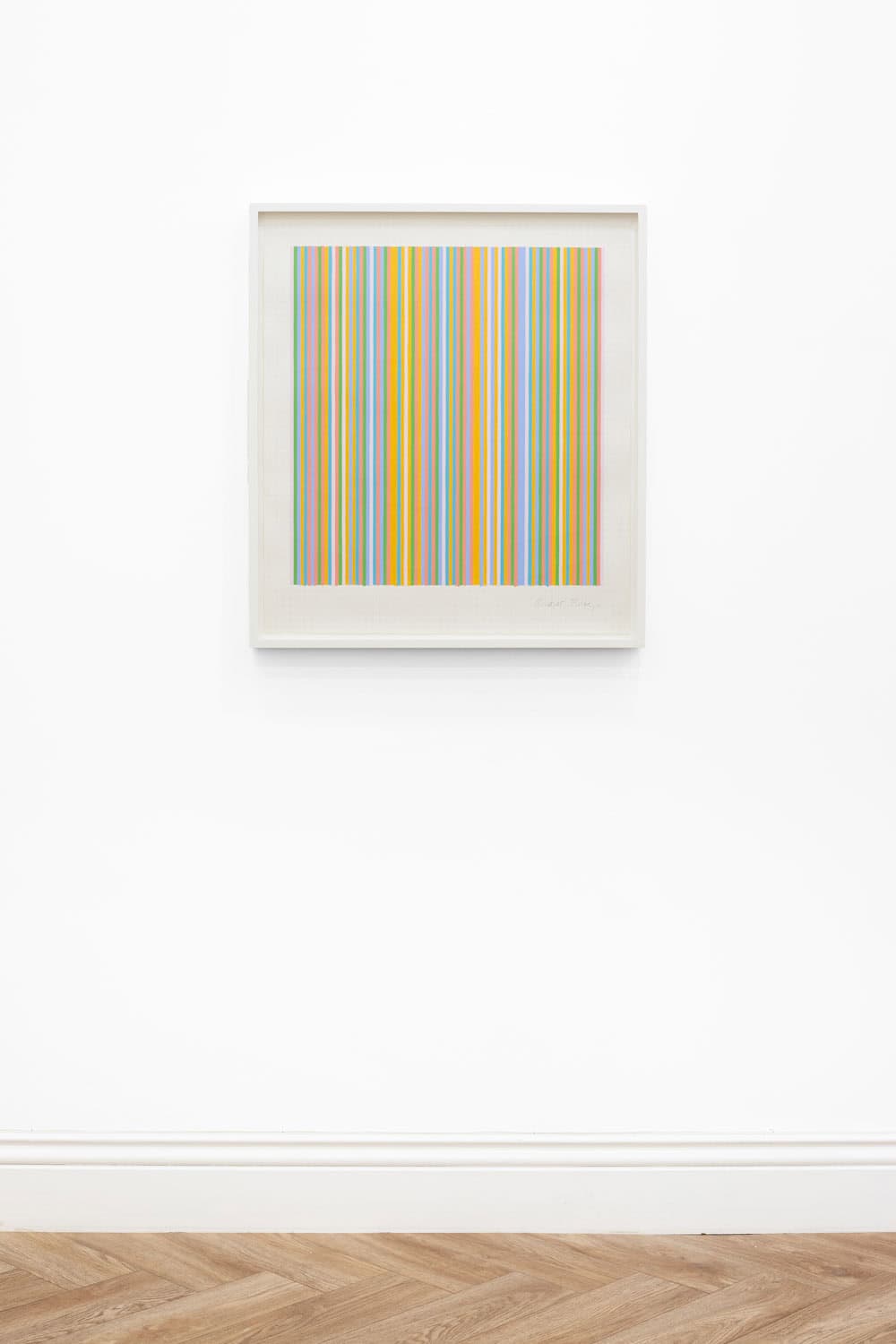Bridget Riley:Egyptian Stripes [July 7th]
1984
Pencil and gouache on graph paper
29 3/4 x 26 1/2 inches
![Bridget Riley, Egyptian Stripes [July 7th], 1984, Huxley-Parlour, 06.03.25–17.04.25](https://huxleyparlour.com/wp-content/uploads/2025/03/Riley-Egyptian-Stripes-July-7th-1984-1.jpg)
For me nature is not landscape, but the dynamism of visual forces, an event rather than an appearance. These forces can only be tackled by treating colour and form as ultimate identities, freeing them from all descriptive and functional roles.
Bridget Riley
The Second World War occupied much of Bridget Riley’s youth. After evacuating London with her mother, she lived on Cornwall’s coast, where she found solace in the natural world. Coastline walks instilled in the young artist a fascination with the cadence of waves, the formations of rocks, and places where there exist ‘so many interlocking shapes and rhythms’, to use her words, visual motifs which cannot but ‘rise to the surface when you’re drawing.’
When the artist visited Egypt in the early 1980s, the colours and accents of the land permeated her art in much the same way as Cornwall had forty years earlier. Riley figures this new world, its patterns and metre, through verse-like repetitions of stripes and colours, while weaving in her interest with optical manipulation, creating hypnotic visual effects. The graph paper, which effectively frames the stripes, emphasises the playful, yet deliberate and measured nature of her tones and impressions. The resultant image is one alive with the latent cadence of the world, in which the interconnectivity of beings and objects form a polyphony, manifested through pure colour and rhythm.
More Info
EnquireIn context
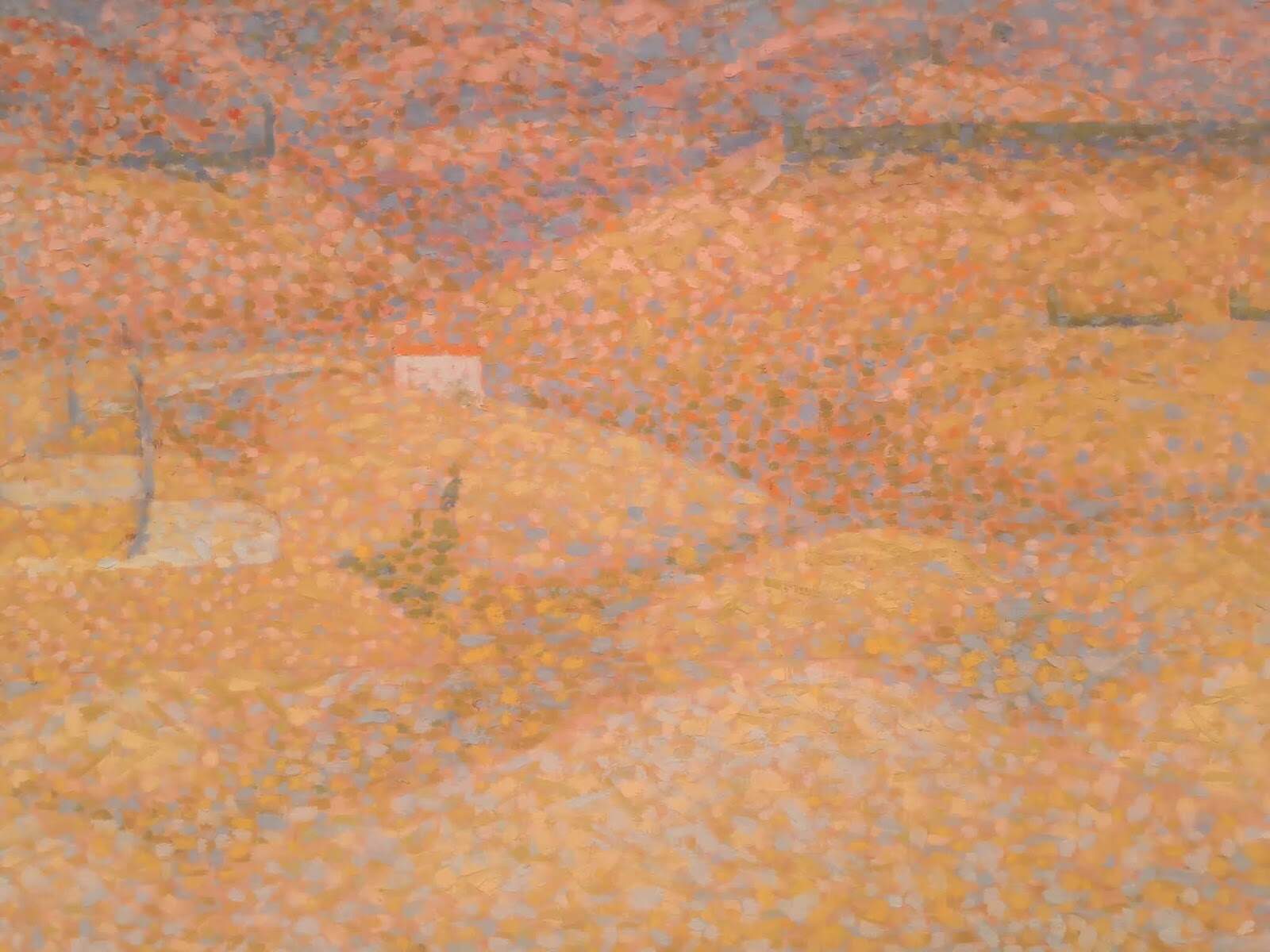
As a young artist, Riley explored interconnectivity through colour by utilising Pointillism; ‘Pink Landscape’ (1960) is an early example of this experimentation, and takes inspiration from Georges Seurat. The French artist’s investigations of colour theory proved stimulating for Riley, and would inform much of her mature work.
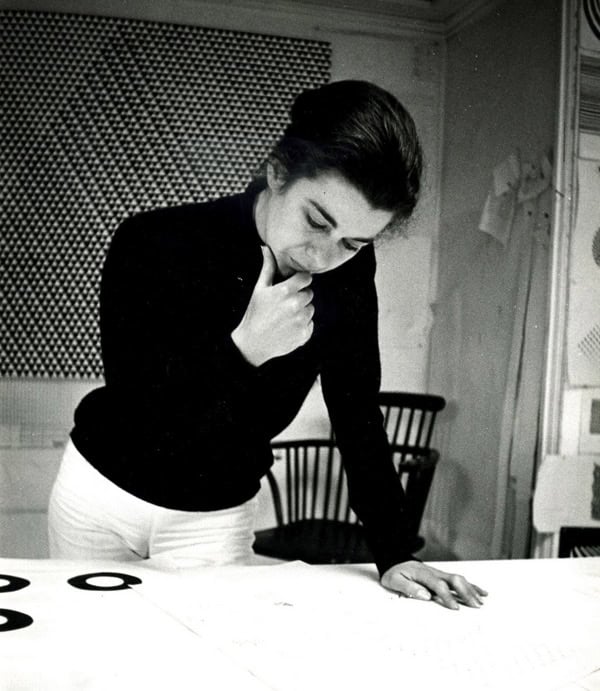
By the early 1960s, Riley began working with abstract images that repeated shapes and tones. These images, which were predominantly in black and white, would feed into what was later termed Op-Art. ‘Optical Art’ centered around optical illusions, the simulations of waves and movement, often with hypnotic effects.
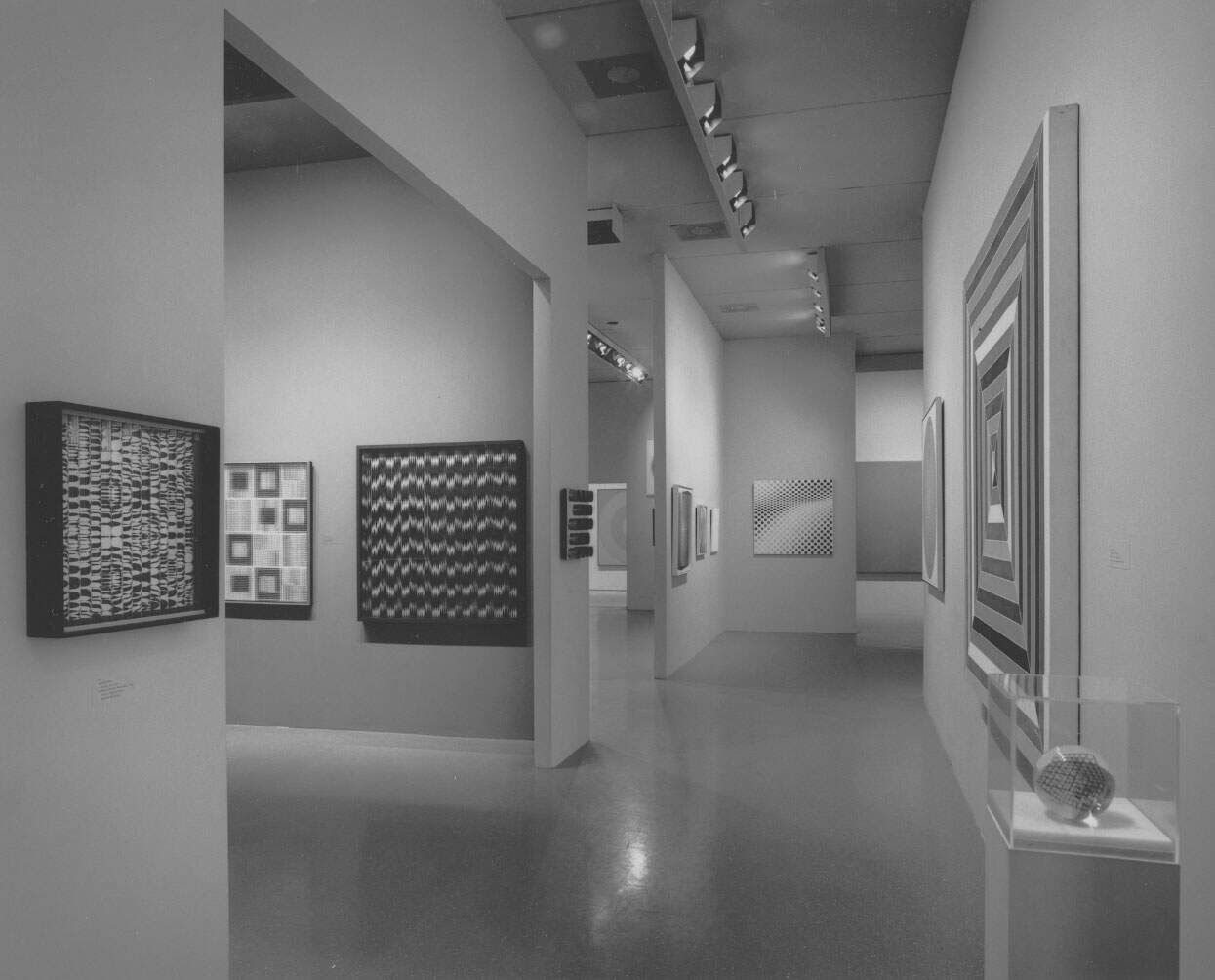
In 1965, the Museum of Modern Art, New York, staged a large-scale group exhibition titled ‘The Responsive Eye’, which included examples by Riley. The exhibition comprised many ‘dizzying’ works of art produced within the Op-Art movement.
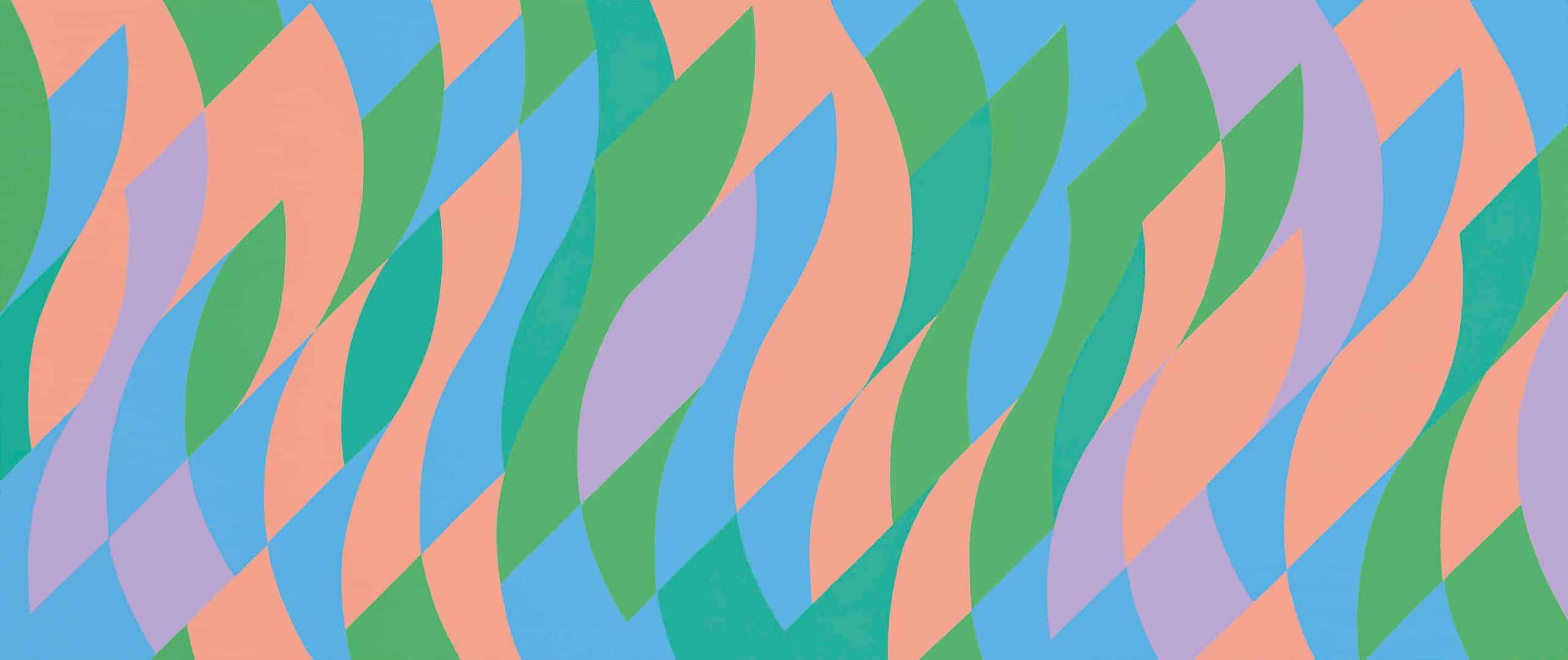
Some of Riley’s most-recognisable works are composed of these tesserae, drawn from the ‘interlocking shapes and rhythms’ of nature. ‘Reflection 2’ (1994) reverberates with Post-Impressionist and Fauvist motifs, reflecting the artist’s continual engagement with art history.
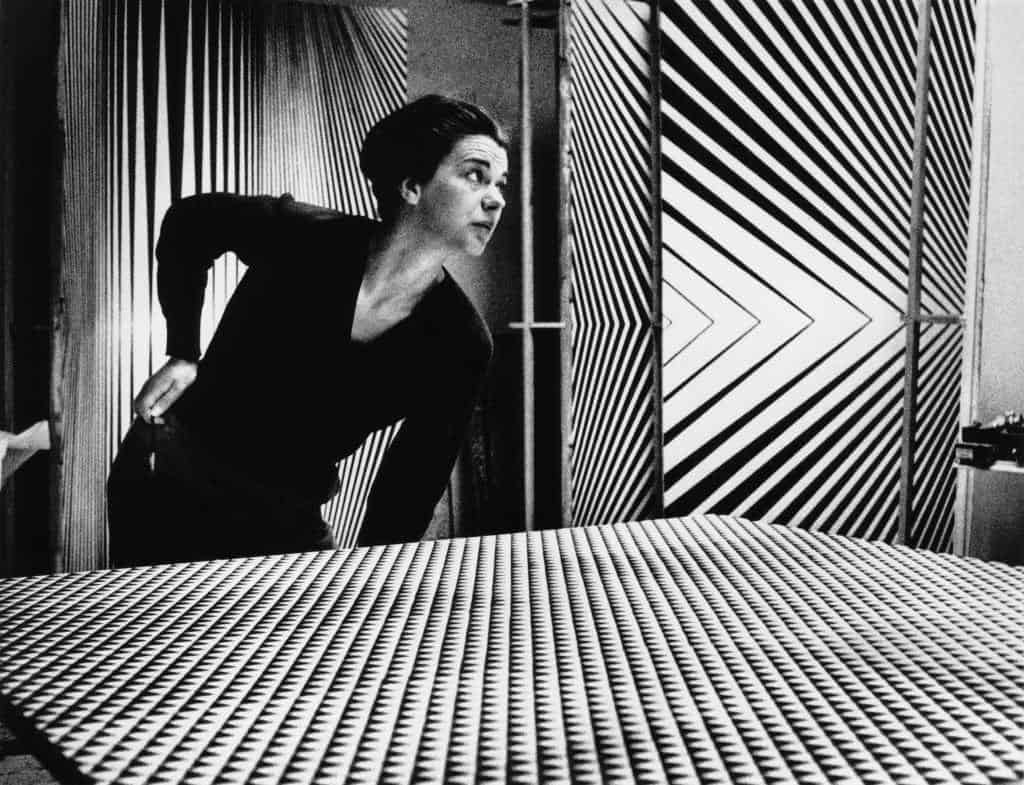
B. United Kingdom 1931
Biography
A founder of the Op-Art movement — where artists distorted the physiology and psychology of perception through the use of colour and geometry — Bridget Riley’s dynamic paintings and prints engage viewers through the illusionary vibration and movement of static forms. Coming from a background in Pointillism, Riley’s early works focused on creating dynamism through limited shapes and colours, using only black and white until 1967, resulting in a bold visual vocabulary which has carried through her career as an artist. Integrating colour into her oeuvre after experiencing the vibrant visual cultures in Egypt, her paintings created over the last half a century have explored the rich potential of contrast and colour theory in creating optical phenomena.
Riley, born in London in 1931, graduated from Goldsmiths’ College in 1952 before completing a degree at Royal College of Art in 1955. Riley has been awarded the AICA Critics Prize, the John Moores’ Liverpool Open Section prize, and an International Painting Prize at the Venice Biennale, among others. Exhibitions of her work have been held in several international galleries and museums, such as the Yale Center for British Art (USA), Tate Modern (UK), National Galleries of Scotland (UK), Hayward Gallery (UK), The Kawamura Memorial DIC Museum of Art (Japan), the National Gallery (UK), and the Museum of Modern Art (USA), among others. Her work is held in the collections of the Art Gallery of New South Wales (Australia), Kunstmuseum (Switzerland), Nationalgalerie (Germany), the National Gallery of Modern Art (Japan), the Stedelijk Museum (Netherlands), Museu Colecção Berardo (Portugal), Tate (UK), Museum of Fine Arts (USA), and the Museum of Modern Art (USA) among others.
